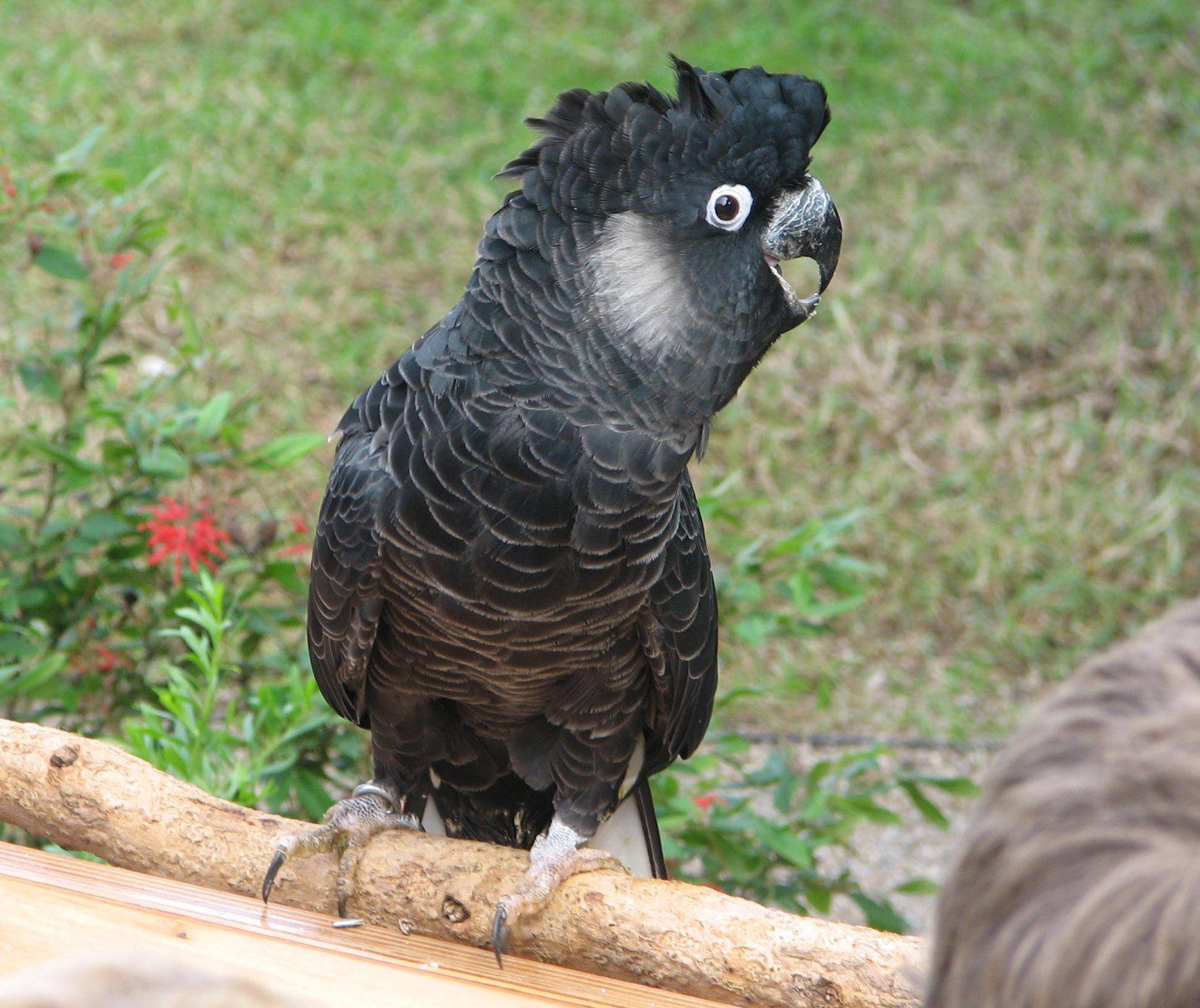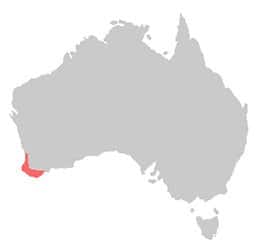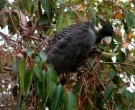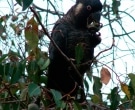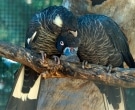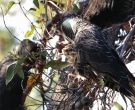Content |
|---|
Description
50 to 57 cm.. height and weight between 560 and 770 g.
to Baudin's black cockatoo (Zanda baudinii) is almost entirely of black, with whitish margins in the feathers, patches rounded on them ear-coverts (yellowish to white in the female and Brown to grey in the male), white rectangular panels in the tail.
has a powerful bill (with greatly elongated upper jaw), Black in the male and white-gray color with a black color in the female tip.
Iris dark brown surrounded by a eye ring Red in the male and female grey.
Tail rounded, crest Erectile and legs greys. birds youth are like adults in appearance, but the bill of the male juvenile is equal to the of the of the female adult. The bill the juvenile male begins to darken after the second year.
- Sound of the Baudin's black cockatoo.
Habitat:
Its natural habitat is the dense forests dominated by the Marris (Corymbia calophylla) in the extreme southwest of Australia.
Gregaria, is often seen in groups of three, a pair of adults with a young, or in small groups. Occasionally they gather in large flocks of up to 300 birds during the non-breeding season, usually in places where food is abundant.
Reproduction:
Very little is known about the reproductive biology This cockatoo, such as their reproduction area, nesting events calendar, the nest tree, Characteristics of holes for nests, implementation size, incubation period, incipient and successful nesting period.
Little is known about their reproductive cycle because nests are extremely difficult to locate.. Most of the characteristics of the biology of the species are inferred from the Short-billed black cockatoo.
They show a strong union of couple and probably is pair of by life. They remain together throughout the year, except when the female is incubating eggs. Probably they begin to breed at the age of four. The species breeds in late winter and spring, from August to November or December. Copulation probably takes place three days before laying. The female lays one or two white eggs and you can lay an egg of replacement if the first since egg fails. The incubation lasts a few 29 days and only the female incubates them. The chicks remain in the nest for a maximum of 16 weeks.
The nests are composed of a layer of wood chips, built in large hollow in the high eucalyptus, 30 to 40 cm. in diameter and more than 30 depth cm.
Food:
Are fed mainly from the seeds of MARRI and Karri. They are also fond of the rending of wood, Apart from pierce the bark of trunks in search of larvae. Apple trees and pear trees are frequently visited to enjoy its fruits.
Distribution:
Confined in the South-West of Western Australia, especially among Perth, Albany and Margaret River.
Small captive populations in the Melbourne Zoo, in the Healesville sanctuary in Victoria, and in the Zoo of Perth. The species is bred in captivity with great difficulty.
Conservation:
State of conservation ⓘ |
||
|---|---|---|
 Vulnerable ⓘ (UICN)ⓘ
Vulnerable ⓘ (UICN)ⓘ
| ||
In Australia is listed as Vulnerable by the law on protection and conservation of biodiversity for the environment.
The total population of the species is estimated at 12.500 individuals, with one downward trend.
Before the inclusion of the threatened species, the annual reproductive rate was of 0,6 per couple, too low to replace the large number of birds that were killed by horticulturists to protect their crops. It is now illegal to shoot these birds, However is it still done.
In captivity:
Appears in the Appendix II of CITES, what limited international trade in the species. It´s illegal capture These wild birds, a penalty of up to 10,000 $. This cockatoo is protected under the Wildlife Conservation Act of Australia.
Alternative names:
– Baudin’s Black Cockatoo, Long-billed Black Cockatoo, White tailed Black Cockatoo (English).
– Cacatoès de Baudin (French).
– Langschnabel-Rußkakadu, Weißohr-Rabenkakadu (German).
– Cacatua-negra-de-bico-longo (Portuguese).
– Cacatúa Fúnebre de Pico Largo, Cacatúa Fúnebre Piquilarga (español).
scientific classification:
– Order: Psittaciformes
– Family: Cacatuidae
– Scientific name: Zanda baudinii
– Genus: Zanda
– Citation: Lear, 1832
– Protonimo: Zanda Baudinii
Images:
Sources:
– Avibase, Australian Government
– Photos: Long-billed Black-cockatoo, Taronga Zoo, Sydney, Wikipedia, Goura (zoochat.com),
– Sounds: Chris Benesh (controles-canto.org)
